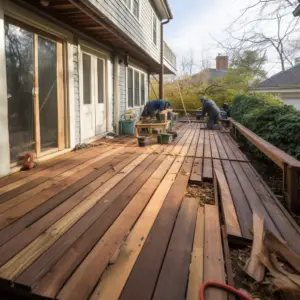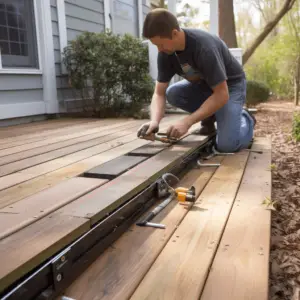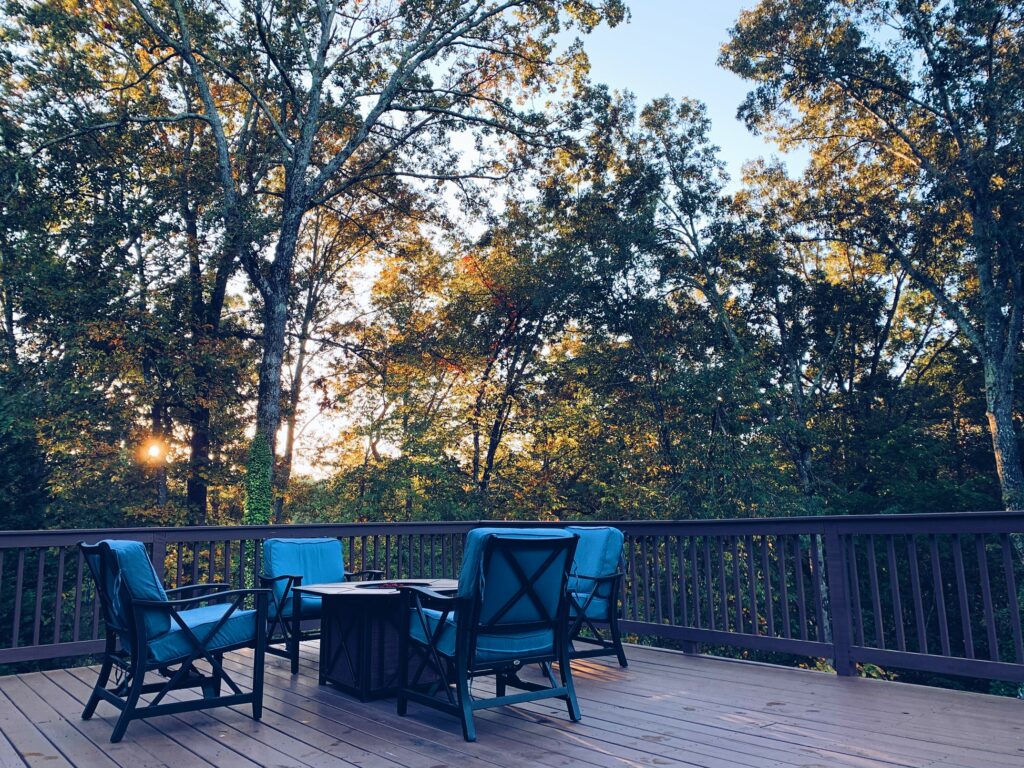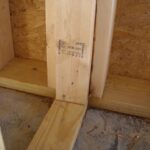Bracing a swaying deck, A sturdy, well-crafted strong deck is the jewel of the exterior of your home and will certainly make or break the exterior facade of your house.
A great deal of thought goes into making a deck the fashionable aesthetically pleasing structure we see and the relaxation it offers as you bask in the glow offered by the outdoors is unparalleled.
All too soon it begins to sway. Ever so slightly but it is there and you have to know the sway will only get worse with time.
A swaying deck is unpleasant and cannot afford you the leisure it is built for. However, even worse is the fact that it may crumble and cause mayhem and injury.
Before all that happens, it would be better to fix the deck and get rid of the loose connections that are responsible for this.
A well-done structure could sway from overuse and age. It is not expected that a young structure would sway about shortly following installation. If anything, a swaying deck is a rarity at best.
Construction of a deck is the job of a professional or a decently knowledgeable individual in woodworking, but bracing a swaying deck may not require as much know-how.
Of course, depending on how badly damaged your deck is, you may need to involve a professional. In the case of a storm or a hurricane, you may not be able to repair your deck yourself so if the damage is extensive, seek advice or hire a professional.
If not, here’s what you can do:
Table of Contents
How to brace a deck from swaying

The deck is attached to the house
A deck can be an elaborate structure but if you have the most common deck that is a raised square or rectangular structure attached to the house then your job is fairly simple.
This deck may sway because its total weight is not secured by the existing framework satisfactorily allowing movement of the platform sideways. This is the most common reason for swaying.
The brace you need is a single wooden bar running diagonally from opposite corners. The brace can be metallic but this is unnecessary.
- Simply measure the distance diagonally and get a corresponding 2 x 2-inch wooden joist.
- Have the corners measured precisely to fit the right angles of your deck else the deck will continue to sway.
- Nail the joist diagonally across the bottom of the deck. Hammer or nail gun, if you have one.Make sure the corners are properly put into the deck angles otherwise the support won’t operate.
Each deck horizontal joist should be nailed to the diagonal bar.
- The deck should cease swaying after this.
- The diagonal joist prevents platform sideways displacement.
- This will not work effectively if the deck is not attached to the house.
Freestanding deck
Sometimes your deck just stands against your house and is not physically linked, which makes a major impact.
This means your deck does not benefit from your house’s support.
Because of its structural stability, an underlying diagonal bracing may not cure a swaying freestanding deck. Critical beams below must be reinforced. This necessitates strengthening the support beam-deck frame joints with a support mechanism.Need another diagonal bar. Right-angled couplings in beams and frame are strain-sensitive.
There are Freestanding deck

- This deck should also be braced diagonally across the platform as explained above.
- To brace the beam-frame joint you will need the same 2 x 2-inch wooden bars.
- These will be short and depending on the height of the deck, the length of these bars will vary.
- On average one foot or one and a half should suffice.
- Ensure the ends are sawed and smoothed to achieve a perfect flat fit against the beam and the framework.
- For each joint, you will need two of these bars.
- You will need to do the same for beams located beneath the deck if the deck is that large.
- For the beams under the platform, you will need four of these bars.
- Nail each bar securely against the beam and the frame on either side and on four sides for the beams under the deck.
- This will strengthen all the joints that attach the beams of the deck to the frame of the deck making them stable enough to resist moving along or against each other which is what results in swaying.
The ground is loose
Sometimes the problem is the ground and not the structural integrity of the deck itself. This is common where the soil is loose or a weather event such as flooding or even leaching has made the ground on which the deck is ‘planted’ softer causing a sway.
Bracing a swaying deck is common, then the deck needs a more permanent base other than wood beams sunk into the ground.
This demands more work but for the sake of safety and permanence, it would be better to lay a cement foundation and have the deck built on it.
Alternatively, you can pour wet cement mixtures into the ground and insert the beams into the wet cement.
The dry end product will be an immovable beam despite the soil or the ground being too weak to support the deck.
Finally…
There are many ways to secure a swaying deck but many methods will need a professional approach to get the best possible job.
In some cases, the sway may be so extensive that the repair job is closer to a renovation. Consult a professional if your deck is damaged in this manner.


